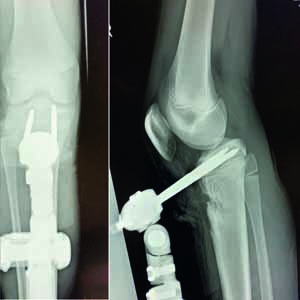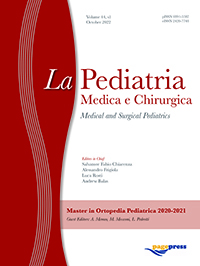Acquired genu recurvatum in a skeletally immature patient treated by physeal distraction: A case report

All claims expressed in this article are solely those of the authors and do not necessarily represent those of their affiliated organizations, or those of the publisher, the editors and the reviewers. Any product that may be evaluated in this article or claim that may be made by its manufacturer is not guaranteed or endorsed by the publisher.
Authors
The proximal tibia physis’ anterior growth arrest is the cause of the uncommon condition known as acquired genu recurvatum, which can also be congenital, idiopathic, or secondary to trauma, infections, cerebrovascular accidents, or neuromuscular diseases. In order to avoid the reported drawbacks that could complicate osteotomies—incomplete correction, patella infera, knee pain or stiffness, and the requirement to remove plate metalwork—physeal distraction and callotasis with external fixation has been suggested. We present the case of a 14-year-old boy who had a 5 cm difference in limb length, with the right leg being shorter, and a right knee that was 30° recurved with flexion restriction beyond 40°. The correction was made in 50 days, and the external fixator was removed in 92 days after we performed a physeal distraction with an axial EF (ST.A.R., Citieffe) through an anterior physeal osteotomy just proximal to the tuberosity in conjunction with simultaneous asymmetrical tibial and femoral contralateral epiphysiodesys. The patient returned to playing football within 8 months despite the persistence of a 3 cm leg length discrepancy and had a symmetric full range of motion of the knee without any complications or persistent pain. The correction of genu recurvatum in adolescents may be achieved safely and effectively through physeal distraction with an axial external fixator.
How to Cite

This work is licensed under a Creative Commons Attribution-NonCommercial 4.0 International License.
PAGEPress has chosen to apply the Creative Commons Attribution NonCommercial 4.0 International License (CC BY-NC 4.0) to all manuscripts to be published.






